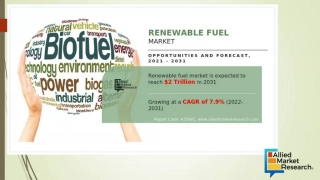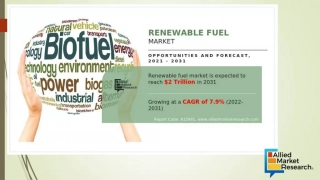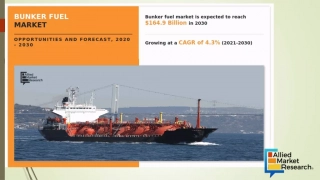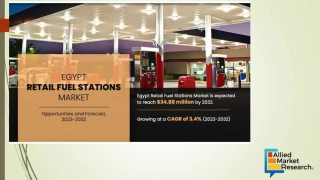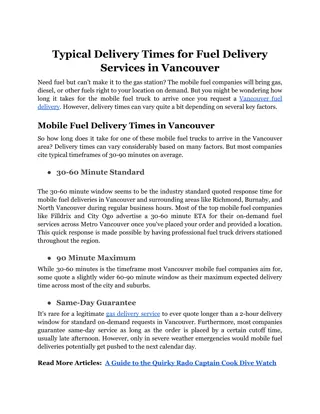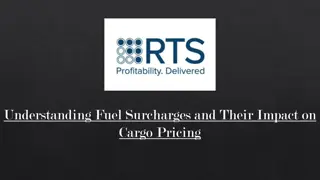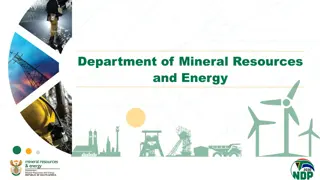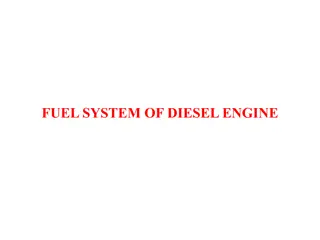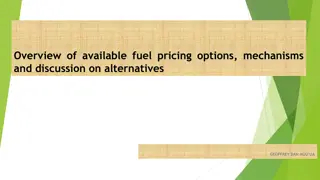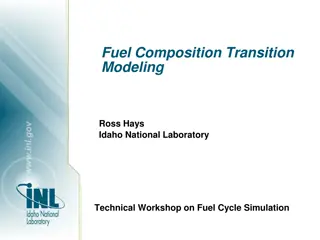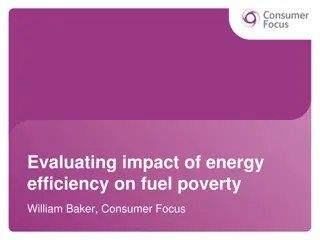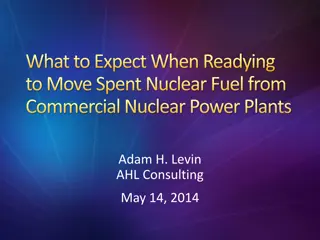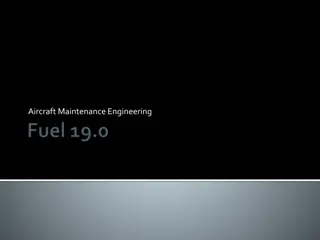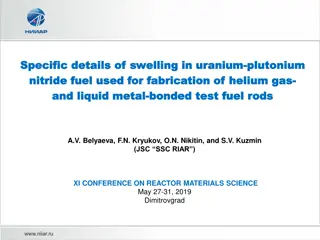
Fuel Switching and Its Implications
Fuel switching involves replacing equipment powered by less efficient fuels with cleaner alternatives to reduce energy consumption and carbon emissions while providing cost savings. Explore the benefits, challenges, and regulatory aspects of fuel switching in the context of decarbonization goals and energy affordability.
Download Presentation

Please find below an Image/Link to download the presentation.
The content on the website is provided AS IS for your information and personal use only. It may not be sold, licensed, or shared on other websites without obtaining consent from the author. If you encounter any issues during the download, it is possible that the publisher has removed the file from their server.
You are allowed to download the files provided on this website for personal or commercial use, subject to the condition that they are used lawfully. All files are the property of their respective owners.
The content on the website is provided AS IS for your information and personal use only. It may not be sold, licensed, or shared on other websites without obtaining consent from the author.
E N D
Presentation Transcript
Fuel Switching EEB Technical Consultants March 9, 2022
Presentation Outline What is fuel switching? Benefits and challenges of fuel switching Fuel switching opportunities Fuel switching economics and GHG impacts Current regulatory treatment of fuel switching C&LM program and financing support of fuel switching Past CES treatment of fuel switching Fuel switching in other Northeast states Board discussion on fuel switching direction
What is Fuel Switching? Replacement of end-use customer facing equipment, powered by less efficient fuels, with a cleaner, economical alternative fuel. Typically results in a reduction in energy consumption and carbon emissions, as well as provides the end-user with bill savings
Potential Benefits of Fuel Switching Encourages adoption of low-carbon efficiency technologies, which in turn reduces greenhouse gas (GHG) emissions to assist in meeting Connecticut s decarbonization goals Provides energy savings at both the site and source Positive customer economics and increased opportunities for energy affordability Increases reliance on local/regional energy supplies 4
Challenges to Fuel Switching for Customers Significant upfront investment Purchase of new end-use equipment in retrofits & replace at failure (ROF) Upgrades to accommodate new equipment load Maintaining multiple systems with partial displacement As customers fuel switch, fewer customers to cover fixed infrastructure costs Who will be left to bear these potentially stranded costs? Will they fall disproportionately on lower income customers and small businesses?
Challenges to Fuel Switching with Transmission and Distribution Impacts on system peak and electric grid from increased electrification Increased capital infrastructure investment ISO-NE forecasts summer peak will continue to exceed winter peak at least through 2030 Increased summer and winter peaks
Fuel Switching Opportunities Biofuels and Renewable Natural Gas Biogas producing technologies for on-site displacement of fossil fuel use for water, space, and industrial process heating CHP fueled by biogas and industrial waste Biomass Wood (pellet and chip) burning technology for water, space, and industrial process heating Electrification Heat pumps for space and water heating Appliances such as induction cooking and clothes dryers Solar thermal Solar thermal technology for space and water heating 7
Technology Options Biomass and Biofuel 8
Economics Biomass and Biofuels General efficiency performance < Heat pumps Natural gas Customer economics over the life of the unit < Heat pumps < Natural gas GHG levels > Heat pumps > Natural gas 11
Economics Electrification Residential Natural Gas Propane Oil General Efficiency Performance Customer Economics (lifecycle) Full or 80% Only Greenhouse Gas Emissions Utility Cost Effectiveness (TRC) Full or 80% Only Commercial Natural Gas Propane Oil General Efficiency Performance Customer Economics (lifecycle) Greenhouse Gas Emissions Utility Cost Effectiveness (TRC) 12
CT Fuel Switching Regulatory context Until DEEP releases a determination addressing this issue, the programs are subject to the policies on fuel- switching established in past DEEP decisions: 2019-2021 Plan Decision with Conditions of Approval While allowing this pilot to proceed, DEEP is not endorsing the use of conservation and load management dollars for fuel switching. DEEP looks forward to learning how to transform this market successfully and this pilot should contribute to this knowledge. To date, the C&LM Plan Program Administrators have not recommended one fuel over another, but provide an incentive to encourage adoption of high efficiency equipment based on the customer s preferred fuel choice. Fuel switching at scale remains crucial to achieve the state s greenhouse gas emission reduction targets to address climate change, and will require identifying sustainable incentive sources to catalyze the transition of oil and propane equipment.
CT Fuel Switching Regulatory context (cont.) 2021 Plan Update Approval with Conditions Delivered Fuel Savings (Section 2.5.9): DEEP recognizes the increased focus on delivered fuel savings for the C&I energy efficiency portfolio in response to DEEP s 2020 Compliance Condition No.24. DEEP is allowing the Utilities to calculate energy savings using a base building or baseline that reflects a fuel type that would have been chosen, absent incentives, regardless if it is a different fuel type than that chosen after incentives. Compliance Condition No, 24 Going forward, all fuel savings shall be counted in program cost effectiveness testing.
2013 and 2018 Comprehensive Energy Strategy (CES) Support for Fuel Switching 2013 CES strongly supported gas fuel switching Provided detailed sector-level economic analysis of gas conversion costs, benefits, net benefits and paybacks Heat pumps particularly GSHPs were seen as an option where gas was not cost effectively available 2018 CES had much a greater focus on GHG reductions, decarbonization and electrification However, the CES saw limited near-term applications for existing whole building electrification/fuel switching Though 2018 CES identified ductless heat pumps doing partial displacements as a near-term opportunity
Board and C&LM Support for Fuel Switching Technologies and Practices Historically, Board has not supported the use of C&LM funds to support fuel switching in most applications Nearly all current program support is for more efficient space and water heating electric technologies: Heat pumps, including ground source heat pumps Heat pump water heaters Incentives are set to address incremental costs and not designed nor sized to promote fuel switching But may displace other fuels
C&LM Support for Fuel Switching Technologies and Practices (cont.) Exceptions: Residential all-electric new construction offer Residential and C&I heat pump pilots Net Zero pathway in ECB C&I induction cooktops Financing options (Appendix) support heat pumps No restriction on the use of financing to displace existing fuel, but do not actively promote fuel switching
Challenges to Fuel Switching in CT Workforce development needs Ensuring adequate numbers and proper training of HVAC contractors, plumbers and electricians Cross training Uncertainty regarding biomass/biofuels GHG impacts Likely to be addressed, at least in part, by CES GC3 notes: Biomass energy, particularly wood biomass, emits more CO2/Btu than coal, and most biomass fuels are not renewable on the time scales that matter for meeting the Paris Agreement goals. It is critical to prevent sources of CO2 emissions to limit global warming. Burning biomass fuel also releases toxins and particulates damaging to public health.
Challenges to Fuel Switching in CT (cont.) Heat pumps are not a one size fits all solution Varying customer economics depending on fuel displaced and relative fuel price differentials Full vs. Partial displacements Ducted vs. Ductless solutions Existing vs. New Construction How to fully fund and/or finance - fuel switching, particularly for LMI and small business customers
Support for Fuel Switching in Other States The below tracks intentional (active) fuel switching rather than passive fuel switching Biomass or Biogas for Industrial Processes Renewable Combined Heat & Power Heat pump dryers Heat Pump Water Heaters New Northeast Fuel Switching Matrix Solar thermal Induction cooking Heat Pumps Biomass Biofuels Construction Electrification Connecticut Massachusetts Rhode Island Vermont Maine New Hampshire New York Pilots PA Programs only Non-PA Programs only Both PA and Non-PA Programs None
Should C&LM Funds be Used to Support Fuel Switching? And if so, which technologies and activities? Intentional (active) vs. passive fuel switching Must any supported technology or activity: Be cost effective? Generate positive customer economics? Have net site MMBtu savings? Yield net GHG emission reductions? Or All of the above? For which technologies and activities do we need more information?
Financing Support for Heat Pumps Financing available for heat pump installations through: Smart-E Loans (CT Green Bank) Air source HPs, GSHPs, and HPWHs 1-4 units owner-occupied Requires a home energy assessment Max. rate of 5.99% for 10-year term (4.49% for 5 years) Energize CT Heating Loan Program Air source HPs and GSHPs 1-4 units owner-occupied Up to $15,000 at 0.99% and on-bill financing Loan term of 3-10 years based on payback Can finance up to 90% of installed cost

